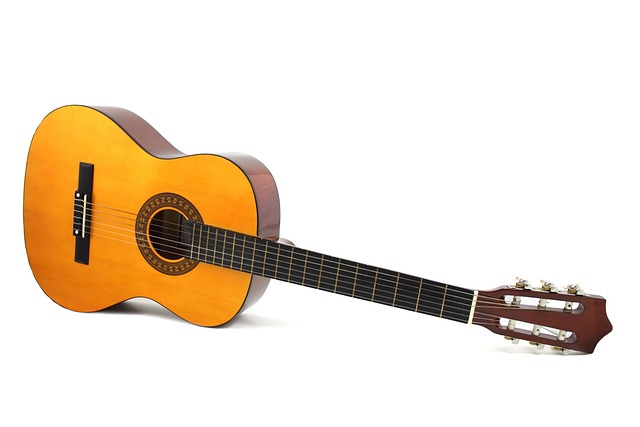Musical Instruments Guide: Types, Selection, and Care
Musical instruments have shaped human culture for thousands of years, offering countless ways to express creativity and emotion. From the gentle strum of an acoustic guitar to the powerful resonance of a grand piano, each instrument brings its own unique voice to the world of music. Understanding the vast landscape of musical instruments, their categories, and proper care can help both beginners and seasoned musicians make informed decisions about their musical journey.

Different Types of Musical Instruments and Their Categories
Musical instruments are traditionally classified into several main categories based on how they produce sound. String instruments, including violins, guitars, and pianos, create music through vibrating strings. Wind instruments are divided into woodwinds like flutes and clarinets, and brass instruments such as trumpets and trombones. Percussion instruments, from drums to xylophones, generate sound through striking, shaking, or scraping. Electronic instruments represent a modern category, encompassing synthesizers, electric guitars, and digital pianos that rely on electronic sound generation.
Within each category, instruments vary significantly in complexity, size, and musical application. String instruments range from simple ukuleles with four strings to complex harps with dozens of strings. Wind instruments span from basic recorders to sophisticated saxophones with intricate key systems. This diversity ensures that musicians can find instruments suited to their musical preferences and technical abilities.
Choosing the Right Instrument for Beginners and Professionals
Selecting an appropriate instrument depends on several factors including age, physical considerations, musical goals, and available practice time. Beginners often benefit from instruments with gentler learning curves, such as keyboards, ukuleles, or recorders. These instruments allow new musicians to understand basic musical concepts without overwhelming technical demands.
Professional musicians typically require instruments that offer greater dynamic range, tonal complexity, and durability. Professional-grade instruments feature superior craftsmanship, premium materials, and precise manufacturing that supports advanced techniques and extended performance schedules. The transition from beginner to professional instruments often represents a significant investment but provides the responsiveness and reliability necessary for serious musical pursuits.
Maintenance and Care Practices for Musical Instruments
Proper maintenance extends instrument lifespan and preserves sound quality. String instruments require regular string replacement, humidity control, and careful cleaning to prevent damage from sweat, dust, and environmental factors. Wooden instruments are particularly sensitive to temperature and humidity changes, which can cause cracking, warping, or other structural issues.
Wind instruments need regular cleaning to remove moisture and debris that can affect intonation and playability. Brass instruments require valve oil and slide grease, while woodwinds need reed care and pad maintenance. Electronic instruments benefit from dust protection, proper cable management, and regular software updates when applicable.
Techniques for Improving Skill and Performance
Developing musical proficiency requires consistent practice, proper technique, and gradual skill building. Effective practice involves focused attention on specific challenges rather than mindless repetition. Musicians benefit from structured practice sessions that include warm-up exercises, technical studies, and repertoire work.
Metronome use helps develop steady timing, while recording practice sessions allows musicians to identify areas needing improvement. Regular lessons with qualified instructors provide personalized guidance and help prevent the development of poor habits that can limit progress or cause injury.
Materials and Construction Methods That Affect Sound Quality
Instrument materials significantly impact tone, projection, and overall sound character. Wood selection affects string and wind instruments profoundly, with different species offering distinct tonal qualities. Spruce tops on guitars and violins provide brightness and projection, while mahogany backs add warmth and depth.
Metal composition influences brass instrument sound, with different alloys producing varying degrees of brightness or warmth. Manufacturing precision affects intonation, playability, and durability. Hand-crafted instruments often feature superior attention to detail compared to mass-produced alternatives, though modern manufacturing techniques have significantly improved consistency and quality in factory-made instruments.
| Instrument Category | Entry-Level Price Range | Professional Price Range | Key Considerations |
|---|---|---|---|
| Acoustic Guitar | $100 - $300 | $1,000 - $5,000+ | Wood quality, action height |
| Digital Piano | $300 - $800 | $2,000 - $8,000+ | Key action, sound sampling |
| Violin | $150 - $500 | $2,000 - $20,000+ | Wood aging, craftsmanship |
| Trumpet | $200 - $600 | $1,500 - $4,000+ | Valve quality, bore size |
| Drum Set | $400 - $1,000 | $2,000 - $10,000+ | Shell materials, hardware |
Prices, rates, or cost estimates mentioned in this article are based on the latest available information but may change over time. Independent research is advised before making financial decisions.
The world of musical instruments offers endless possibilities for creative expression and personal growth. Whether pursuing music as a hobby or profession, understanding instrument categories, selection criteria, maintenance requirements, and practice techniques provides a solid foundation for musical success. Quality instruments, properly maintained and skillfully played, can provide decades of musical enjoyment and artistic fulfillment.




